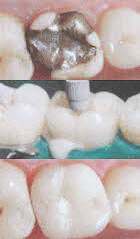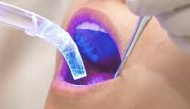Tooth-colored fillings are very popular in cosmetic dentistry. Tooth structure can be destroyed due to dental decay. Tooth-colored fillings bond directly to teeth.
 It has to be restored to its full shape and contour in order to use the tooth to its full function. Dental fillings are done to avoid complications such as root canal treatments, dental crowns or even removal of the tooth.
It has to be restored to its full shape and contour in order to use the tooth to its full function. Dental fillings are done to avoid complications such as root canal treatments, dental crowns or even removal of the tooth.
White tooth-colored fillings, also called composite or bonded fillings, bond directly to teeth and hence require less healthy tooth structure to be removed to hold the filling in place. They are used to restore the natural appearance of decayed or previously filled teeth.
Restoring a tooth with composite fillings involves the following steps:
- Removal of the decay portion of the tooth

- Conditioning the tooth surface
- Adding tooth colored composite restoration material
- Curing the material with a high-intensity curing light
Tooth-colored composite material is commonly used in Cosmetic Dentistry because they are:
- Natural looking
- Mercury free
- Strong
- Biocompatible
- Provide a better seal
Watch this video from the American Dental Association about tooth-colored composite fillings used commonly in cosmetic dentistry: